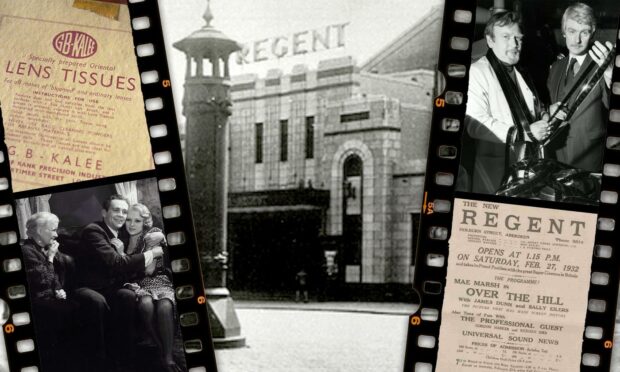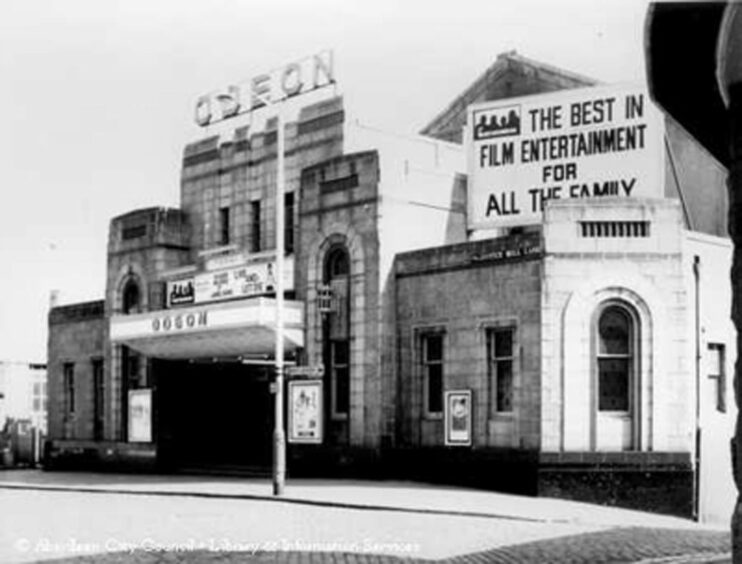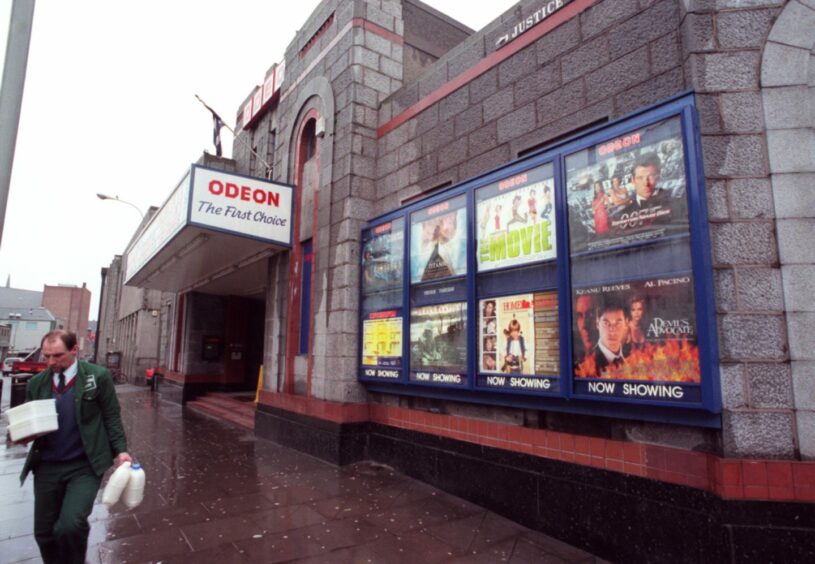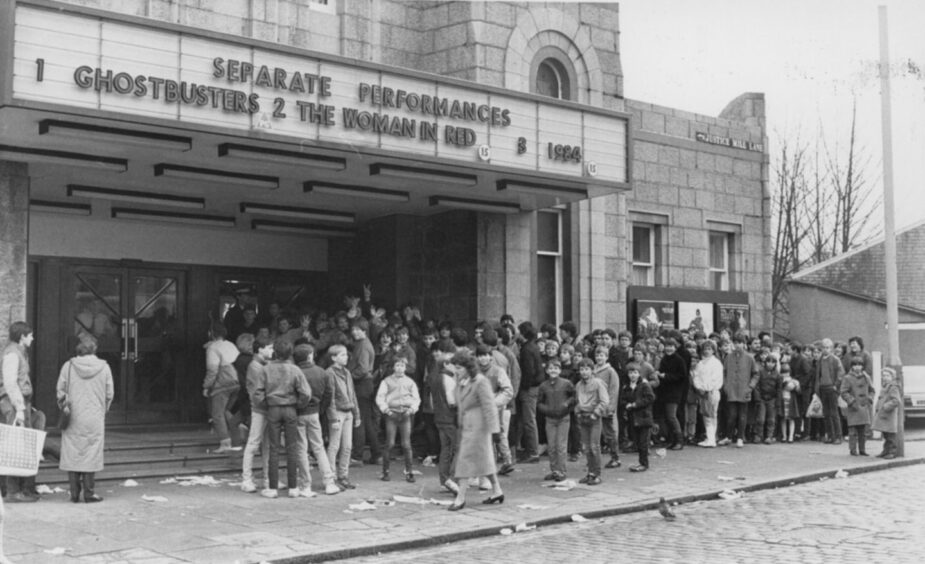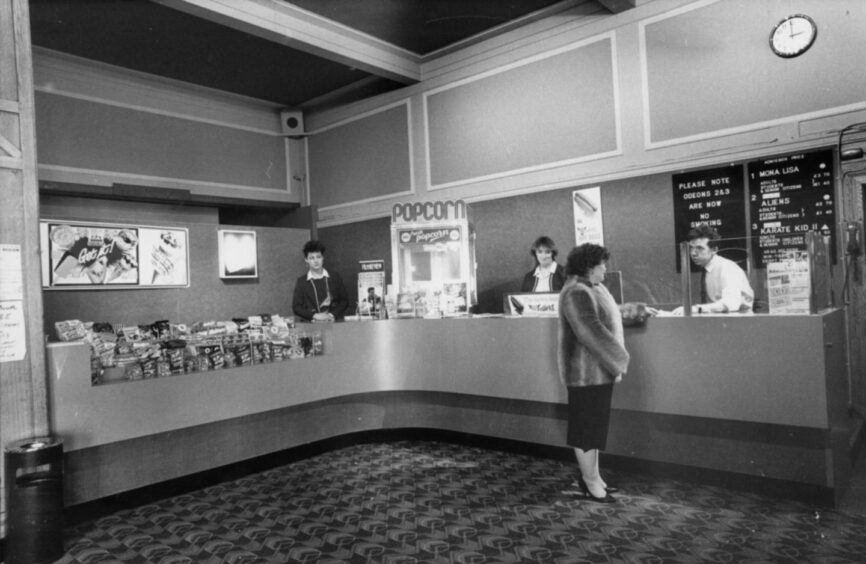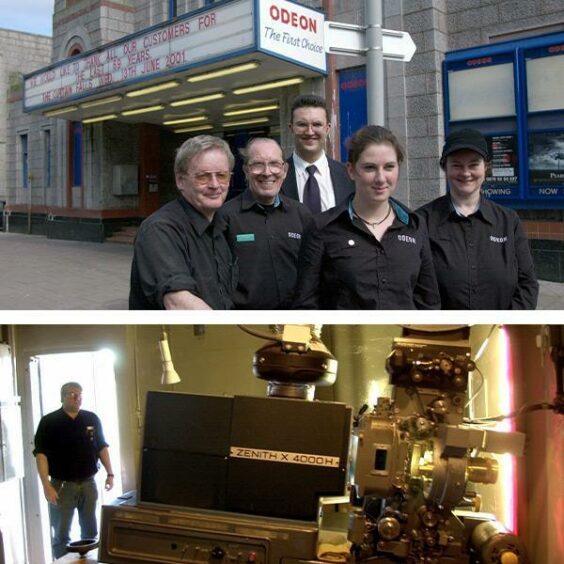There was quite a buzz in Justice Mill Lane, Aberdeen, 90 years ago.
More than 5,000 people flocked to the opening of a purpose-built new cinema, billed as a ‘supercinema’, equal to the finest in the country.
For the first eight years it was known as The Regent.
The building emerged in only seven months from the opening of the foundations, amid high expectations about its size and aesthetics.
It didn’t disappoint, with the Press & Journal reporting that the ‘magnificent’ building exceeded the high expectations of the public.
They described it in terms of dignity and beauty, while inside “its luxurious appointments and up to date RCA sound equipment equal anything in the cinema world.”
Architect T. Scott Sutherland from Torry saw his building labelled a triumph.
Architectural challenges
The project, on the site of the historic Justice Mill, cost £10,000, and had to deal with seemingly ‘insuperable’ architectural challenges — the ground dropping away nearly 30ft and half the building over the old mill pond, with the mill burn running diagonally across the site.
The contractor, warmly praised for efficiency and thoroughness, was Bruce Mackenzie Ltd of Union Street.
The handsome façade was of grey granite in the ‘most modern design’ with decorative bands of red terracotta and a polished black granite base designed to reveal their full grandeur under neon lights and floodlighting.
The auditorium had a capacity for 2100, including 500 on the balcony.
Inside, the colour scheme was warm beige, with bands of blues, reds and browns picked out in gold and silver.
The seats were in old gold velvet, and the jazz-patterned carpets were the last word in 1930s art-deco style.
The first general manager was Bert Darnley of Poole’s Theatres chain, with J.K. Stafford Poole as the resident manager.
The opening programme on Saturday February 27, at prices ranging from 7d to 2/-, was Over the Hill, starring Mae Marsh and James Dunn, billed as ‘the finest drama since the advent of talking pictures.’
The supporting film was The Professional Guest with Gordon Harker, billed as ‘tons of fun.’
In 1936, County Cinemas took over the cinema, and were themselves taken over three years later by Odeon Theatres Ltd.
The Regent finally became the Odeon in 1940.
The cinema welcomed millions
Half a century later, in 1982, more than 20 million people had passed through the cinema’s doors.
To celebrate the 50th anniversary, the Odeon screened the UK provincial premiere of On Golden Pond, with Katharine Hepburn, Henry Fonda and Jane Fonda.
There were some adjustments to the capacity over time, and in 1974 the Odeon was converted into three screens, with two 123-seater mini-cinemas tucked under the rear stalls under the circle.
In 1991 two more screens were added in the former front stalls, giving cinema-goers more choice.
But even in 1982, the writing was on the wall for the hey-day of cinema with the arrival of video shops.
The previous year the Queen’s and Grand Central in Aberdeen had closed their doors.
Far from the 2,100 capacity at the start of its life, the Odeon now had capacity for 1,000 across its three cinemas.
Video industry ‘no threat’
Then manager Tony Goodman said that he wasn’t worried about the threat to the cinema industry from video recorders.
“I still believe there are two audiences.
“You get the person who will sit in front of TV and watch videos, and the person who will come here.
“For one thing, the cinema has a much better atmosphere.”
But it proved impossible to turn back the tide, even after refurbishment in 1995.
On June 13 2001, projectionist Ron Young started up the machinery for the last time, and after the closing credits for American teen comedy, Get Over It, staff members Colin Morrice, Andrew MacDonald, Martin Ellis, Lucy Hyland and Caroline Gray shut up shop for the last time.
Huge wrench
Chief technician Colin Morrice said it would be a huge wrench — “it is the sort of business that gets into your bloodstream.
“I know I’m going to miss it, it’s been my whole life.”
Owners Odeon had merged with ABC cinemas 16 months earlier, spelling the gradual end of city centre cinemas.
In the early days of the Odeon, there were 14 cinemas in Aberdeen, with T. Scott Sutherland’s art deco palace the first purpose-built one.
During the 1920s, there were 18 cinemas with one seat for every seven people.
But despite the Odeon’s attempts to move with the times, it couldn’t keep up with multiplexes.
In August 2002, Historic Scotland made the building Grade C listed, and in the same month, the venue opened as a Wellman’s Health Studio, the auditorium having been gutted and the circle removed.
You might enjoy:
The forgotten glamour of Aberdeen’s Art Deco cinemas
